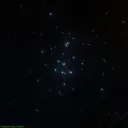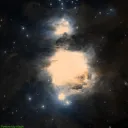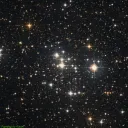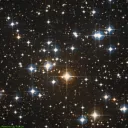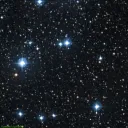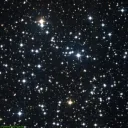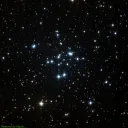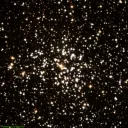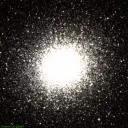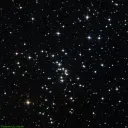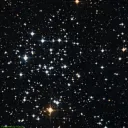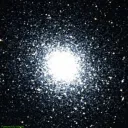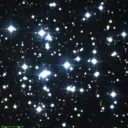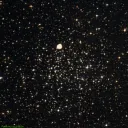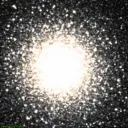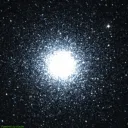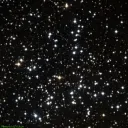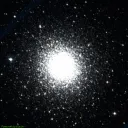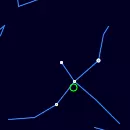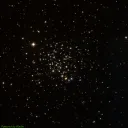Messier Objects Tonight
Messier objects are a set of 110 astronomical objects cataloged by the French astronomer Charles Messier in the 18th century. These objects include a variety of celestial phenomena such as star clusters, nebulae, and galaxies. The catalog was created to help astronomers distinguish between permanent and transient objects in the night sky. Some of the most famous Messier objects include the Andromeda Galaxy (M31), the Orion Nebula (M42), and the Pleiades star cluster (M45). The Messier Catalog remains a popular reference for amateur and professional astronomers alike.Sky Map
Celectial bearing and elevation at 16:05
This skymap is a dynamic visualization that displays the positions of celestial objets in the night sky for your specific location on the current date. It allows you to interactively explore the celestial landscape by moving it horizontally, enabling you to preview how the arrangement of stars will change as the night progresses.
Beehive (M44)
Open Cluster
The Beehive Cluster, an open star cluster containing over 1,000 stars, located approximately 577 light-years away in the constellation Cancer.
Orion Nebula (M42)
Star cluster + Nebula
The Orion Nebula, a bright emission nebula and star-forming region, containing over 700 stars, located approximately 1,344 light-years away in the constellation Orion.
M47
Open Cluster
An open star cluster containing over 500 stars, located approximately 1,600 light-years away in the constellation Puppis.
M41
Open Cluster
The Little Beehive Cluster, an open star cluster containing over 100 stars, located approximately 2,300 light-years away in the constellation Canis Major.
M39
Open Cluster
An open star cluster containing approximately 30 stars, located approximately 800 light-years away in the constellation Cygnus.
M35
Open Cluster
An open star cluster containing over 1200 stars, located approximately 2,800 light-years away in the constellation Gemini.
M34
Open Cluster
An open star cluster containing over 400 stars, located approximately 1,400 light-years away in the constellation Perseus.
M37
Open Cluster
A rich open star cluster containing over 500 stars, located approximately 4,500 light-years away in the constellation Auriga.
Hercules Globular Cluster (M13)
Globular Cluster
The Great Hercules Cluster, a large globular cluster containing several hundred thousand stars, located in the constellation Hercules.
M48
Open Cluster
An open star cluster containing over 200 stars, located approximately 1,500 light-years away in the constellation Hydra.
M50
Open Cluster
An open star cluster containing over 200 stars, located approximately 3,000 light-years away in the constellation Monoceros.
M5
Globular Cluster
A large globular cluster containing several hundred thousand stars, located in the constellation Serpens.
M36
Open Cluster
An open star cluster containing over 60 stars, visible to the naked eye under dark skies, located approximately 4,100 light-years away in the constellation Auriga.
M46
Open Cluster
An open star cluster containing over 500 stars, located approximately 5,400 light-years away in the constellation Puppis.
M15
Globular Cluster
A dense globular cluster containing hundreds of thousands of stars, located in the constellation Pegasus, approximately 33,600 light-years away.
M3
Globular Cluster
A spectacular globular cluster containing approximately 500,000 stars, situated in the constellation Canes Venatici.
M38
Open Cluster
An open star cluster containing over 100 stars, located approximately 4,200 light-years away in the constellation Auriga.
M92
Globular Cluster
Globular cluster one of the oldest clusters known, contains high metallicity stars.
M29
Open Cluster
An open star cluster containing over 400 stars, part of the Cygnus OB1 association, located approximately 4,000 light-years away.
M67
Open Cluster
An open star cluster containing over 500 stars, located approximately 2,800 light-years away in the constellation Cancer.
Data Credits
The nebulae information on this page is sourced from the OpenNGC project, developed by Matteo Verga. OpenNGC provides detailed data on the NGC catalog, which is a valuable resource for exploring deep-sky objects such as nebulae.
For more details or to contribute to OpenNGC, visit the official GitHub repository: OpenNGC on GitHub.

